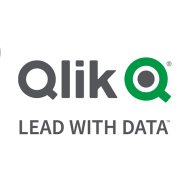

Domo and Qlik Compose are competitive in the data integration and management space. Domo seems to have the upper hand in user-friendliness and comprehensive features, while Qlik Compose stands out for its automation and data modeling capabilities.
Features: Domo is designed for ease of use, featuring rapid dashboard creation, comprehensive data integration through numerous connectors, and the ability to manage massive data sources effortlessly. It simplifies graph setup without repeated configurations. Qlik Compose is strong in real-time data integration, enabling data mart creation without coding, and boasts a stable, intuitive interface for data warehouse automation.
Room For Improvement: Domo users seek better data visualization control, enhanced ETL functionalities, and improved collaboration tools. It struggles with very large datasets and offers limited innovative visualization options. Qlik Compose could benefit from improved monitoring and scheduling features, better handling of complex transformations, and enhanced support, documentation, and scalability for high-volume data processing.
Ease of Deployment and Customer Service: Domo offers flexible deployment options, including public and private clouds, and is generally noted for rapid deployment and user-friendly setup, though some users report frustrations with technical support and response times. Qlik Compose also provides deployment flexibility but has room for improvement in customer service, with users experiencing challenges in initial setup and a lack of proactive technical support.
Pricing and ROI: Domo is often seen as expensive, with variable pricing based on organization size and needs, but offers significant ROI through ease of use and comprehensive features. Qlik Compose is noted for its high and rigid pricing, often more expensive than alternatives, yet users recognize the ROI from its robust data automation and integration, enhancing business decisions and operational visibility.
| Product | Market Share (%) |
|---|---|
| Domo | 0.7% |
| Qlik Compose | 1.0% |
| Other | 98.3% |


| Company Size | Count |
|---|---|
| Small Business | 16 |
| Midsize Enterprise | 11 |
| Large Enterprise | 20 |
| Company Size | Count |
|---|---|
| Small Business | 3 |
| Midsize Enterprise | 3 |
| Large Enterprise | 6 |
Domo is a cloud-based, mobile-first BI platform that helps companies drive more value from their data by helping organizations better integrate, interpret and use data to drive timely decision making and action across the business. The Domo platform enhances existing data warehouse and BI tools and allows users to build custom apps, automate data pipelines, and make data science accessible for anyone through automated insights that can be shared with internal or external stakeholders.
Find more information on The Business Cloud Here.
Qlik Sense is a powerful business intelligence tool that offers a range of features to help organizations make faster and more informed decisions. Its primary use cases include operational and financial dashboards, self-service reporting, and centralized access to cross-functional reports. The solution is praised for its mobile platform, ease of use, data-sharing capabilities, and extensibility.
Qlik Sense has helped organizations improve data literacy, reduce time consumed in complex reports, and provide widely available MI to senior stakeholders. It also enables self-service analytics, improves data quality and governance, enhances collaboration, and reduces costs.
We monitor all Data Integration reviews to prevent fraudulent reviews and keep review quality high. We do not post reviews by company employees or direct competitors. We validate each review for authenticity via cross-reference with LinkedIn, and personal follow-up with the reviewer when necessary.